|
|
| Sei in: Cinema e Medioevo ® Indice alfabetico dei film |
Mughal-E-Azam
1960, regia di K. Asif
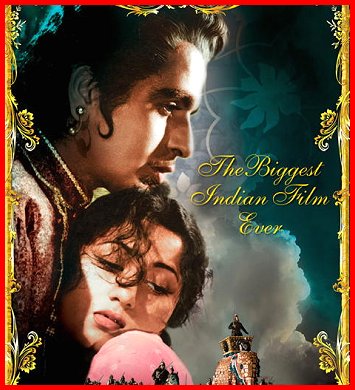
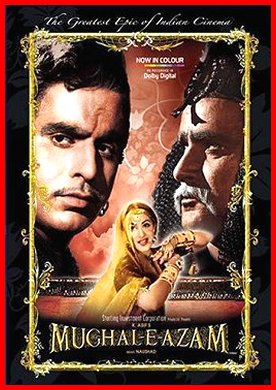
Scheda: Nazione: India - Produzione: Sterling Investment Corp. - Distribuzione: Shemaroo Video Pvt. Ltd, UTV Motion Pictures, Star Tv - Soggetto: Aman - Sceneggiatura: Aman, K. Asif - Dialoghi: Aman, Kamal Amrohi, Vajahat Mirza, Ehsan Rizvi - Fotografia: R.D. Mathur - Montaggio: Dharamvir - Art Direction: M.K. Syed - Musiche: Naushad - Effetti speciali: Ansari - Formato: B.N.-Technicolor, linguaggio Urdu - Durata: 173' (191').
Cast: Prithviraj Kapoor, Dilip Kumar, Madhubala, Durga Khote, Nigar Sultana, Ajit, M. Kumar, Murad, Jilloo Maa, Vijayalaxmi, S. Nazir, Sheela Delaya, Surinder, Johnny Walker, Jalal Agha, Tabassum, Gopi Krishna.
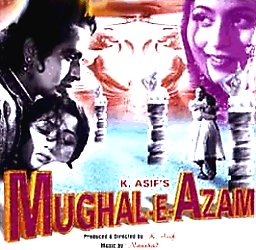
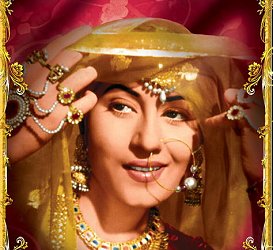
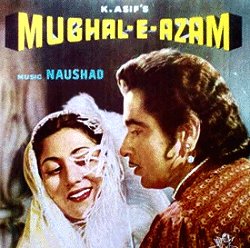
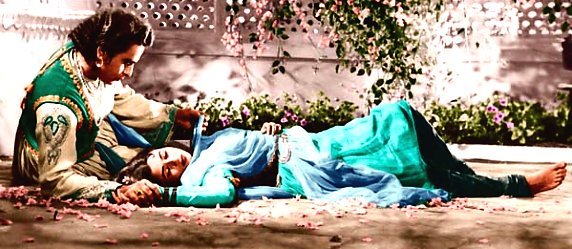
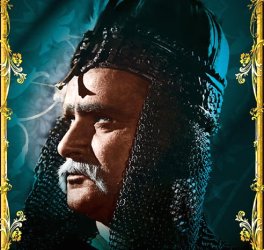

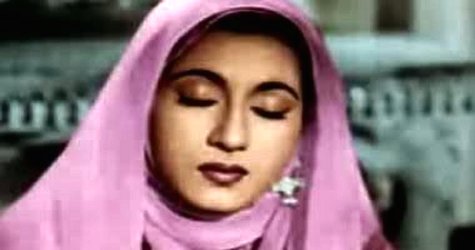
![]() Trama e commenti:
nonfarelindiano.blogspot.com -
xoomer.virgilio.it/srijan/film
-
kalpana.it
-
worldlingo.com
-
all.uniud.it: «...il «tema matrimoniale» è
quello fondamentale (o, se non fondamentale: un quasi ineludibile tema
secondario) di tutto il cinema indiano, non solo di Bollywood, ma anche dei film
cosiddetti «d’arte» (da Mughal-e-Azam a Mr e Mrs Iyer, per
esempio). La caratteristica del «tema matrimoniale indiano» è di avere sempre
tre candidati allo sposalizio o all’unione: due donne e un uomo, o due uomini e
una donna. ... Mughal-e-Azam (1960), diretto da K. Asif, [sull'amore
del principe Jahangir per la danzatrice Anarkali] è uno dei più importanti
film indiani mai realizzati».
Trama e commenti:
nonfarelindiano.blogspot.com -
xoomer.virgilio.it/srijan/film
-
kalpana.it
-
worldlingo.com
-
all.uniud.it: «...il «tema matrimoniale» è
quello fondamentale (o, se non fondamentale: un quasi ineludibile tema
secondario) di tutto il cinema indiano, non solo di Bollywood, ma anche dei film
cosiddetti «d’arte» (da Mughal-e-Azam a Mr e Mrs Iyer, per
esempio). La caratteristica del «tema matrimoniale indiano» è di avere sempre
tre candidati allo sposalizio o all’unione: due donne e un uomo, o due uomini e
una donna. ... Mughal-e-Azam (1960), diretto da K. Asif, [sull'amore
del principe Jahangir per la danzatrice Anarkali] è uno dei più importanti
film indiani mai realizzati».
![]() Plot Summary, Synopsis, Review: IMDb
-
allmovie.com
-
en.wikipedia.org
-
rediff.com
-
planetbollywood.com
-
bbc.co.uk
-
razyboard.com
-
hindustantimes.com
-
sfgate.com
-
livemint.com
-
uiowa.edu:
«The theme of the conflict between passionate individual love (pyar,
mohabbat) and duty — especially the duty owed to one's father and patriarchal
family lineage (involving the obligation to maintain izzat or "honor",
maryada, "propriety," and usool, "principles") may be to
mainstream Hindi filmmaking what "boy meets girl" was to Samuel Goldwyn's
Hollywood — an abiding preoccupation that spawns endless cinematic permutations.
Yet for sheer baroque grandiosity, K. Asif's excessive elaboration of the theme
remains in a class by itself, and more than forty years after its release, still
holds a place on nearly every list of the "ten best Hindi films of all time."
Purportedly a decade in the making, it was said to have been the costliest film
yet produced in India. It's not hard to see why. Asif's grand operatic vision
piles spectacle on spectacle, moving masses of extras with a choreography
reminiscent of Fritz Lang or Sergei Eisenstein, and fabricating fairtytale sets
that have definitively stamped popular imaginings of Mughal imperial opulence.
Asif's ultimate trump card was technicolor—then prohibitively expensive for
Indian filmmakers, and so reserved by the director for two legendary climactic
musical scenes, both set in the royal pleasure pavilion or Shish Mahal ("palace
of mirrors," stunningly crafted by mirrorwork master Agha Shirazi), that unfold
as mind-blowing epiphanies. The simple storyline blends facts of history—the
sometimes tumultuous relationship between the Mughal empire's most charismatic
ruler, Akbar the Great (1542-1605), and his eldest son and designated heir
Prince Salim (later the Emperor Jahangir, 1569-1627), a far weaker character
with a well-attested taste for wine, women, and opium—with the popular story of
the slave girl and court dancer Anarkali ("pomegranate blossom"), for whose sake
Salim is supposed to have defied his father, and whose legendary fate was to be
walled-up alive at Akbar's order. In the role of Akbar, Prithviraj Kapoor gives
his quintessential performance as outwardly-stern-but-inwardly-suffering
patriarch (cf. Judge Raghunath in Awara), declaiming every line (composed in an
Urdu so thickly Persianized one could weave rugs out of it) in a stentorian
baritone that even Amitabh Bachchan might envy. ...».
Plot Summary, Synopsis, Review: IMDb
-
allmovie.com
-
en.wikipedia.org
-
rediff.com
-
planetbollywood.com
-
bbc.co.uk
-
razyboard.com
-
hindustantimes.com
-
sfgate.com
-
livemint.com
-
uiowa.edu:
«The theme of the conflict between passionate individual love (pyar,
mohabbat) and duty — especially the duty owed to one's father and patriarchal
family lineage (involving the obligation to maintain izzat or "honor",
maryada, "propriety," and usool, "principles") may be to
mainstream Hindi filmmaking what "boy meets girl" was to Samuel Goldwyn's
Hollywood — an abiding preoccupation that spawns endless cinematic permutations.
Yet for sheer baroque grandiosity, K. Asif's excessive elaboration of the theme
remains in a class by itself, and more than forty years after its release, still
holds a place on nearly every list of the "ten best Hindi films of all time."
Purportedly a decade in the making, it was said to have been the costliest film
yet produced in India. It's not hard to see why. Asif's grand operatic vision
piles spectacle on spectacle, moving masses of extras with a choreography
reminiscent of Fritz Lang or Sergei Eisenstein, and fabricating fairtytale sets
that have definitively stamped popular imaginings of Mughal imperial opulence.
Asif's ultimate trump card was technicolor—then prohibitively expensive for
Indian filmmakers, and so reserved by the director for two legendary climactic
musical scenes, both set in the royal pleasure pavilion or Shish Mahal ("palace
of mirrors," stunningly crafted by mirrorwork master Agha Shirazi), that unfold
as mind-blowing epiphanies. The simple storyline blends facts of history—the
sometimes tumultuous relationship between the Mughal empire's most charismatic
ruler, Akbar the Great (1542-1605), and his eldest son and designated heir
Prince Salim (later the Emperor Jahangir, 1569-1627), a far weaker character
with a well-attested taste for wine, women, and opium—with the popular story of
the slave girl and court dancer Anarkali ("pomegranate blossom"), for whose sake
Salim is supposed to have defied his father, and whose legendary fate was to be
walled-up alive at Akbar's order. In the role of Akbar, Prithviraj Kapoor gives
his quintessential performance as outwardly-stern-but-inwardly-suffering
patriarch (cf. Judge Raghunath in Awara), declaiming every line (composed in an
Urdu so thickly Persianized one could weave rugs out of it) in a stentorian
baritone that even Amitabh Bachchan might envy. ...».
![]() Approfondimenti: Movie
Review
Approfondimenti: Movie
Review
Il film, conosciuto anche con i titoli: The Great Mughal; The Emperor of the Mughals, nel 2004 è stato ripresentato in versione colorized.